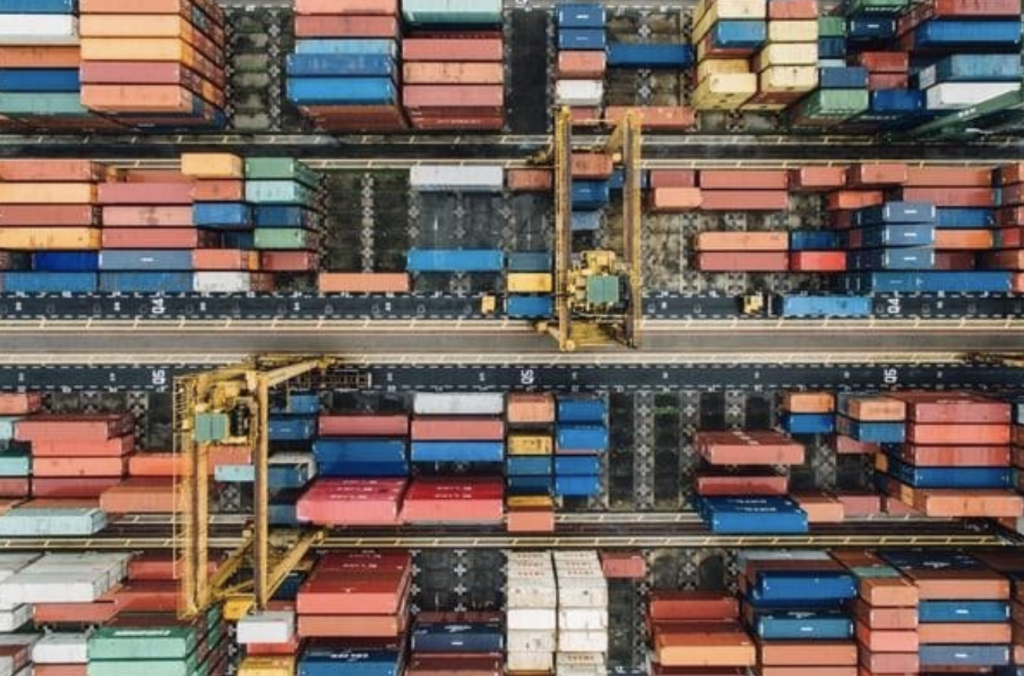This article was originally published on LinkedIn.
When a customer returns an unwanted or defective product, it initiates a cascade of events that ripple all along the supply chain. Reverse logistics — keeping track of returned products and the reuse or disposal of their materials — is much more challenging than forward logistics.
Reverse logistics cost companies nearly $750 billion a year, FreightWaves reports, and e-commerce growth continues to drive those costs upward. Fortunately, FreightWaves’ research also shows that those costs can be alleviated by a logistics blockchain strategy. Such a strategy will also help companies improve efficiency and document responsibility in all reverse logistics operations.
Alleviating the Pain Points of Reverse Logistics
It’s not that blockchain can solve every problem associated with reverse logistics. For example, blockchain can’t predict customers’ reactions to a bad product experience, nor can it anticipate the condition of returned equipment. However, blockchain can help companies alleviate many other pain points across most industries, such as the following:
1. Recall Management
Manufacturers in every industry — including automotive, electronics, toys, and food — struggle to manage recall situations efficiently. Efforts to limit corporate and consumer exposure to the problem usually lead to shotgun approaches that are highly opaque and inefficient.
Blockchain’s ability to improve manufacturing and quality control processes by enabling transparency across a supply chain is well-established. That same transparency facilitates quick, efficient recall management. To begin with, it can reduce the effort required to manage the recall, whether the manufacturer is issuing a return material authorization (RMA) to consumers or dealing with delays associated with recall notifications. Blockchain also provides for collecting normalized, trusted data from across the supply chain. With that data in hand, manufacturers can better negotiate with suppliers to reduce overhead costs associated with production and recall management.
Most notably, blockchain improves food safety because it allows unparalleled traceability. This allows for only the tainted products to be taken off the shelf, thus reducing both the waste and the time associated with recalling bad products. Over time, transparency on ingredient provenance will lead to higher-quality products by eliminating fraudulent and bad ingredients in the supply chain.
2. Disposal Management
In addition to managing reverse logistics processes, manufacturers are also responsible for meeting sustainability and ethical sourcing objectives. The risks in asset disposal dwarf the risks of forward logistics, due mainly to the lack of transparency into a products’ aftermarket life cycle. Manufacturers must dispose of assets in ways that don’t waste resources or cause environmental harm. The stakes are even higher when manufacturers must meet regulatory and audit requirements as electronics, industrial machinery, chemical, and energy companies do.
Blockchain can provide end-to-end transparency that spans from sourcing through reclamation, recycling, and disposal. Manufacturers can streamline the recovery of raw materials for repurposing, make sure of proper disposal of waste, and ensure all company and personal data is properly destroyed. This also helps companies can more effectively measure KPIs against regulatory requirements and environmental initiatives.
3. Spare Part Inventory Management
Counterfeit spare parts impact both manufacturing and service industries, creating major risks for brands from both quality and safety perspectives. According to the 2018 Global Brand Counterfeiting Report, counterfeit accounts for roughly 3% of all global trade — about $1.2 trillion each year. Airline manufacturers are under particular pressure to ensure that counterfeit parts do not enter their supply chains. Tracing the provenance of all parts and tracking them through the life cycle of assets creates major headaches.
When blockchain powers the supply chain, it enables product authentication at the asset and part level. The improved data leads to improved predictive analytics, and companies can maintain a more accurate spare parts inventory. Third-party vendors have greater insight and can provide better overall service for the brand while reducing the counterfeit parts market.
4. Warranty Management
Consumer brands often sell on the basis of the strength of their warranties. In the minds of consumers, that includes the level of service associated with warranty management — a time-consuming undertaking for companies. The inefficiencies are driven largely by logistics issues such as sales data verification, lucrative secondary markets, and ownership determination.
Blockchain eases these issues by providing reliable identity management to help prevent fraud resulting from identity theft. That includes securing personal data for security and privacy purposes, as well as facilitating robust loyalty programs for more efficient warranty operations and higher customer satisfaction.
Consumers expect the return process to be simple and streamlined, but companies have trouble meeting that expectation. With blockchain, improved transparency and trusted data help make reverse logistics much more efficient and effective leading to more satisfied customers. To learn more about how blockchain can improve your supply chain process, download our whitepaper.

